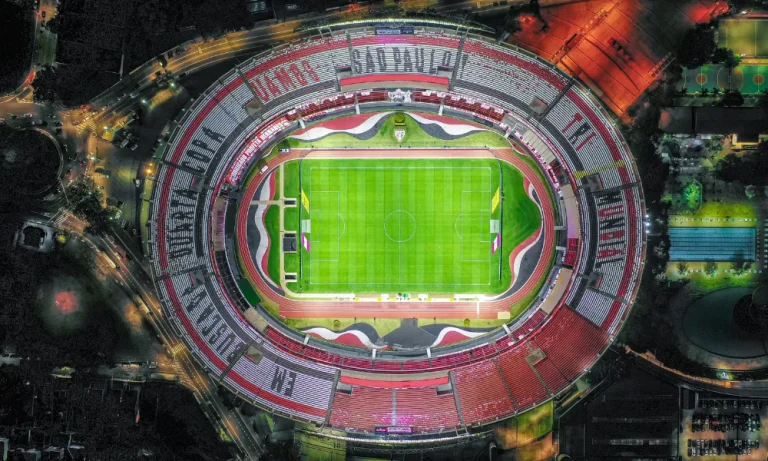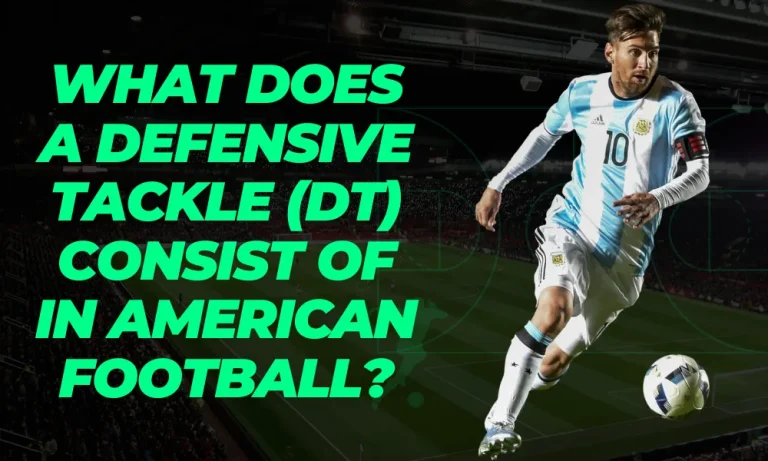What does GD mean in Football?
Introduction
Football is a sport that captivates millions of fans around the world. As spectators, we follow our favorite teams, celebrate their victories, and analyze their performances. But amidst all the excitement, certain terms and abbreviations can leave us scratching our heads. One such term is “GD” in football. So, what does GD mean in football? In this article, we will demystify this abbreviation and explore its significance in determining team rankings. Understanding GD is essential for any football enthusiast, so let’s dive in and uncover its true meaning.
What is GD in Football?
In football, GD stands for Goal Difference. It is a crucial statistical measure that helps determine the performance and ranking of teams in a league. GD represents the difference between the number of goals a team has scored and the number of goals they have conceded throughout a given period, usually a season.
To calculate GD, you subtract the total number of goals conceded by a team from the total number of goals they have scored. The resulting value can be positive, negative, or even zero. A positive GD indicates that a team has scored more goals than they have conceded, while a negative GD suggests the opposite.
The importance of GD in league standings cannot be overstated. In most football leagues, the team with the highest GD occupies the top position. GD serves as a crucial tiebreaker when two or more teams have the same number of points. It provides a fair and objective way to differentiate teams, rewarding those who have performed better in terms of goal-scoring and defensive capabilities.
How is GD Calculated?
GD, which stands for Goal Difference, is calculated by subtracting the total number of goals conceded by a team from the total number of goals they have scored. This simple formula gives us a numerical value that represents a team’s GD.
To break it down further, let’s say my favorite team scored 50 goals throughout the season and conceded 30 goals. To calculate their GD, I subtract 30 from 50, resulting in a positive GD of 20. This means my team has scored 20 more goals than they have conceded.
GD values can be positive, negative, or even zero. A positive GD indicates that a team has a higher number of goals scored than goals conceded. On the other hand, a negative GD suggests that a team has conceded more goals than they have scored. If a team’s GD is zero, it means they have scored the same number of goals as they have conceded.
To illustrate this further, let’s consider another example. If a team has scored 40 goals and conceded 45, their GD would be -5. This negative value indicates that they have conceded five more goals than they have scored.
What Does Positive GD Indicate?
A positive GD (Goal Difference) in football indicates that a team has scored more goals than they have conceded. It reflects their attacking prowess and showcases their ability to outscore their opponents. A higher positive GD holds significant importance in evaluating a team’s performance and competitiveness.
When a team has a positive GD, it means they have been successful in finding the back of the net more often than their opponents. This showcases their offensive strength and goal-scoring ability. A higher positive GD indicates that the team has consistently been able to create scoring opportunities and convert them into goals, which is a valuable asset in football.
A positive GD also reflects a team’s ability to dominate matches and control the game’s flow. It indicates that they have been able to impose their attacking style on their opponents, putting pressure on their defense and creating chances. A higher positive GD suggests that the team has been able to maintain a consistent offensive threat throughout the season, making them a formidable opponent.
What Does Negative GD Indicate?
A negative GD (Goal Difference) in football indicates that a team has conceded more goals than they have scored. It reflects their defensive vulnerabilities and suggests that they have struggled to prevent their opponents from finding the back of the net. A higher negative GD holds significant importance in evaluating a team’s defensive performance and weaknesses.
When a team has a negative GD, it means they have allowed their opponents to score more goals than they have been able to score themselves. This indicates defensive vulnerabilities and a lack of effectiveness in preventing goals. A higher negative GD suggests that the team has struggled consistently to defend against their opponents’ attacks, leading to a larger difference in goals conceded.
A negative GD also reflects a team’s inability to control the game and protect their own goal effectively. It indicates that they have been prone to defensive lapses, allowing their opponents to exploit gaps and create scoring opportunities. A higher negative GD suggests that the team has been consistently exposed defensively, making them more susceptible to conceding goals.
How Does GD Affect League Standings?
In the world of sports, goal difference (GD) plays a crucial role in determining league standings. GD is a simple yet effective metric that reflects the difference between the number of goals a team scores and the number of goals it concedes throughout a season. It serves as a tiebreaker when teams have the same number of points.
When teams are tied on points, the team with the higher GD will be ranked higher in the league standings. This is because GD provides a clearer picture of a team’s overall performance and effectiveness in both attacking and defending. A positive GD indicates a team has scored more goals than it has conceded, showcasing their offensive prowess. Conversely, a negative GD suggests a team has conceded more goals than it has scored, highlighting potential defensive weaknesses.
In addition to its role as a tiebreaker, GD is often compared with other criteria such as head-to-head record, goals scored, or even fair play points. While these criteria may also be used to determine league standings, GD is often favored due to its objectivity and simplicity. GD takes into account the overall performance of a team throughout the season, rather than relying on specific matches or disciplinary measures.
To illustrate the impact of GD on league positions, let’s consider a real-life example from football. In the English Premier League, teams are ranked based on points, with GD serving as the primary tiebreaker. In the 2018-2019 season, Manchester City and Liverpool finished with the same number of points. However, Manchester City had a significantly higher GD, ultimately securing the league title. This showcases how GD can significantly influence the final league standings and determine the champions.
How Does GD Impact Strategies and Tactics?
Goal difference (GD) not only influences league standings but also has a significant impact on teams’ strategies and tactics in matches. A team’s GD can shape their approach to matches, as it directly affects their position in the league and their chances of achieving their goals.
The importance of goal difference in determining tactical decisions cannot be understated. When a team has a comfortable GD advantage, they may opt for a more defensive approach, focusing on maintaining their lead rather than taking unnecessary risks. Conversely, a team with a negative GD may adopt a more attacking mindset, aiming to score more goals to improve their GD and climb up the league standings.
Real-life examples of teams adjusting their gameplay based on GD considerations are plentiful. In situations where a team is chasing a higher GD to secure a favorable league position, they may adopt an all-out attacking strategy, taking risks and committing more players forward. On the other hand, a team with a substantial GD advantage might prioritize defensive solidity, concentrating on maintaining their lead and minimizing the chances of conceding unnecessary goals.
What does GD stand for in football?
GD stands for “goal difference” in football, representing the difference between the number of goals a team scores and the number of goals they concede.
How is GD calculated in football?
GD is calculated by subtracting the number of goals a team concedes from the number of goals they score throughout a season.
What is the purpose of GD in football?
GD serves as a tiebreaker in determining league standings when teams have the same number of points. It reflects a team’s overall performance and effectiveness in both attacking and defending.
How does GD impact league positions?
When teams are tied on points, the team with the higher GD will be ranked higher in the league standings. GD plays a crucial role in determining the order of teams with the same number of points.
Can GD affect a team’s strategy in matches?
Yes, GD can impact a team’s strategy. Teams may adjust their gameplay based on their GD advantage or disadvantage, adopting more defensive or attacking approaches to improve their GD and league position.
Conclusion:
GD (Goal Difference) holds immense importance in the world of football. It not only determines team rankings but also adds an element of excitement and competitiveness to the sport. By calculating the difference between goals scored and goals conceded, GD provides a clear picture of a team’s overall performance. It reflects their attacking prowess, defensive vulnerabilities, and ultimately impacts their league standings. So, the next time you come across the term “GD” in football discussions, you’ll have a solid understanding of its meaning and significance. Keep enjoying the beautiful game and embrace the thrill that GD brings to the sport.






